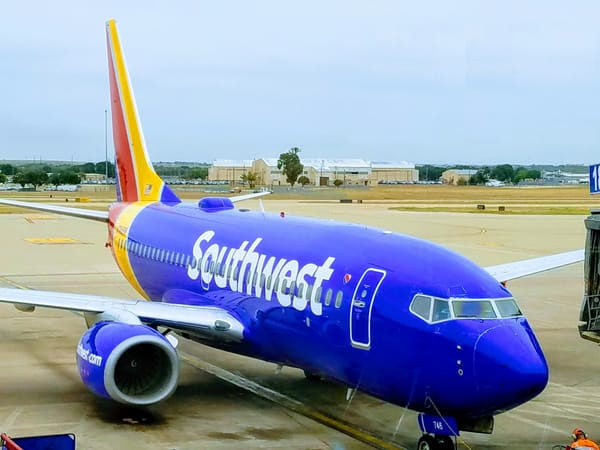Gold Mines, Apples and the Old West: The Julian Way
Explore Julian, California, a historic gem known for its gold mining past and world-famous apple pie, blending rich heritage with charming attractions.
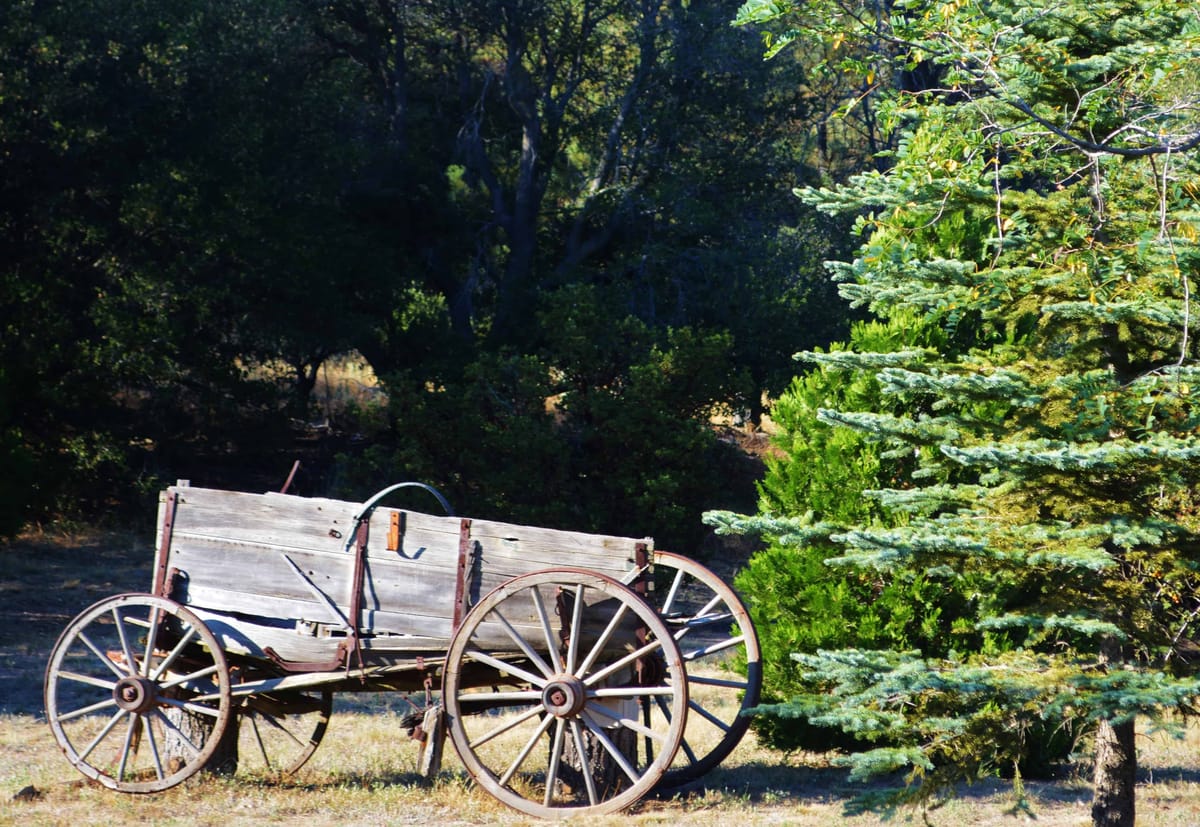
Carl Sagan once said “If you want to make an apple pie from scratch, you must first invent the universe.” To many residents of Julian, California, gold mines and apple pie have long been their universe. And they couldn’t be happier.
Located just an hour northeast of San Diego in the foothills of the Cuyamaca Mountains at an elevation of 4,225 feet, Julian is a throwback to simpler times. Once a bustling gold mining town, prospectors first ventured into its fertile hills after an African-American cattle herder named A.E. “Fred” Coleman discovered flecks of gold in a clear, sparkling stream bed while watering his horse in 1869.
Word spread quickly bringing hundreds of prospectors descending on the hills surrounding Julian. All were hoping to discover the source of the gold and stake their claim. Soon, over 200 mines were in operation in the slopes surrounding Julian. When mining became more costly than the gold’s value, the mines permanently closed in 1937, sitting idle and abandoned.
Visit to Eagle and High Peak Mines
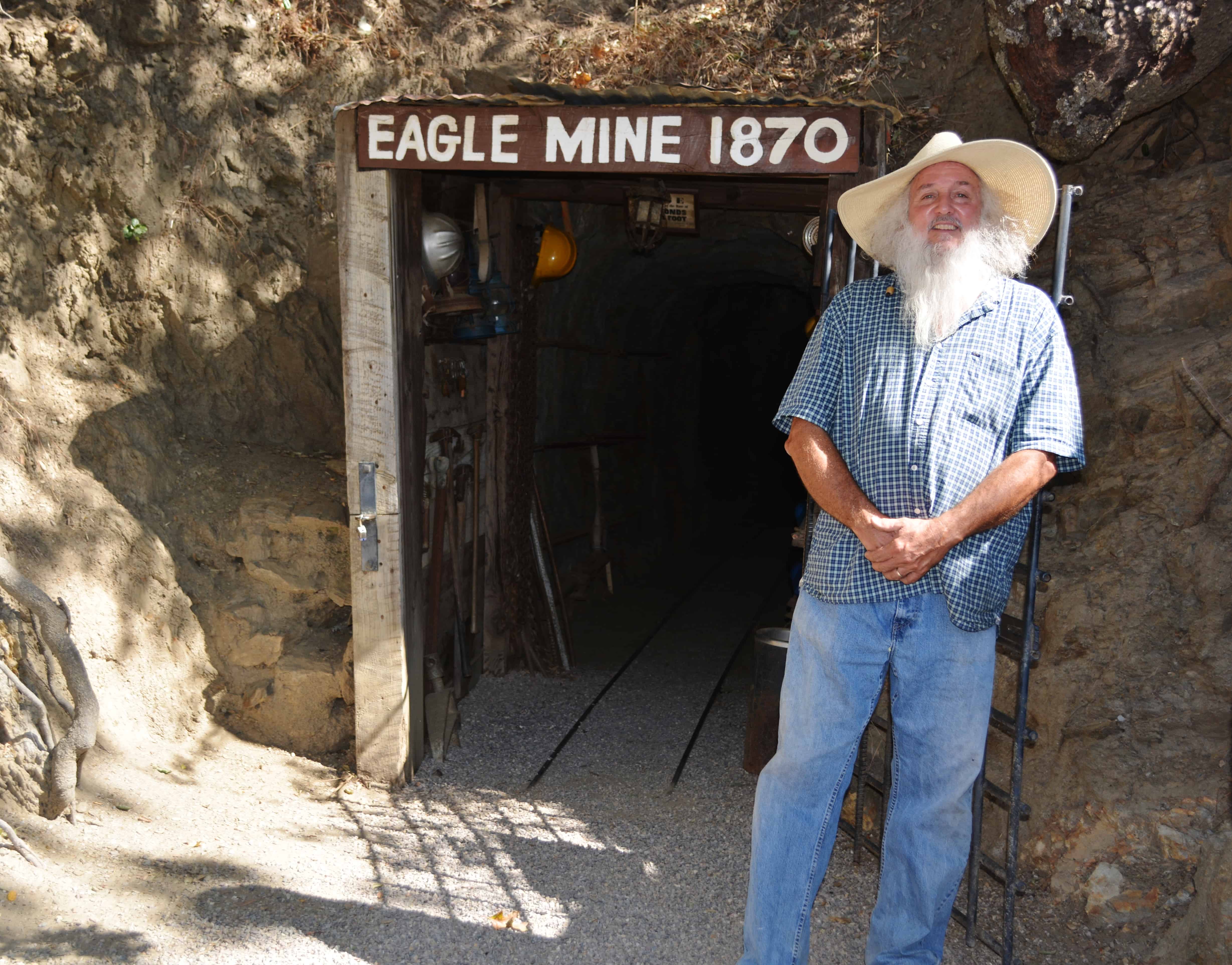
Two mines, however, are now open to the public thanks to the vision of a U.S. Navy veteran, Ed Sprague who purchased Julian’s historic Eagle and High Peak Mines in 1965. Inside the tunnels and shafts, he found massive amounts of original mining equipment. After two years of restoration, preserving Julian’s rich gold mining heritage, Ed opened Eagle Mining Company and welcomed the first tourists into the mines.
Professional guides at the mines appear as if they’d stepped from the pages of a history book on the Old West. One gentleman, sporting a snow white beard and wide brimmed prospector’s hat, holds up a miner’s lantern as he greets visitors at the Eagle Mine entrance. Dressed in work dungarees and a plaid shirt, the grizzled guide provides a brief history of its mining operations before taking guests for a fascinating tour of the mine’s interior.
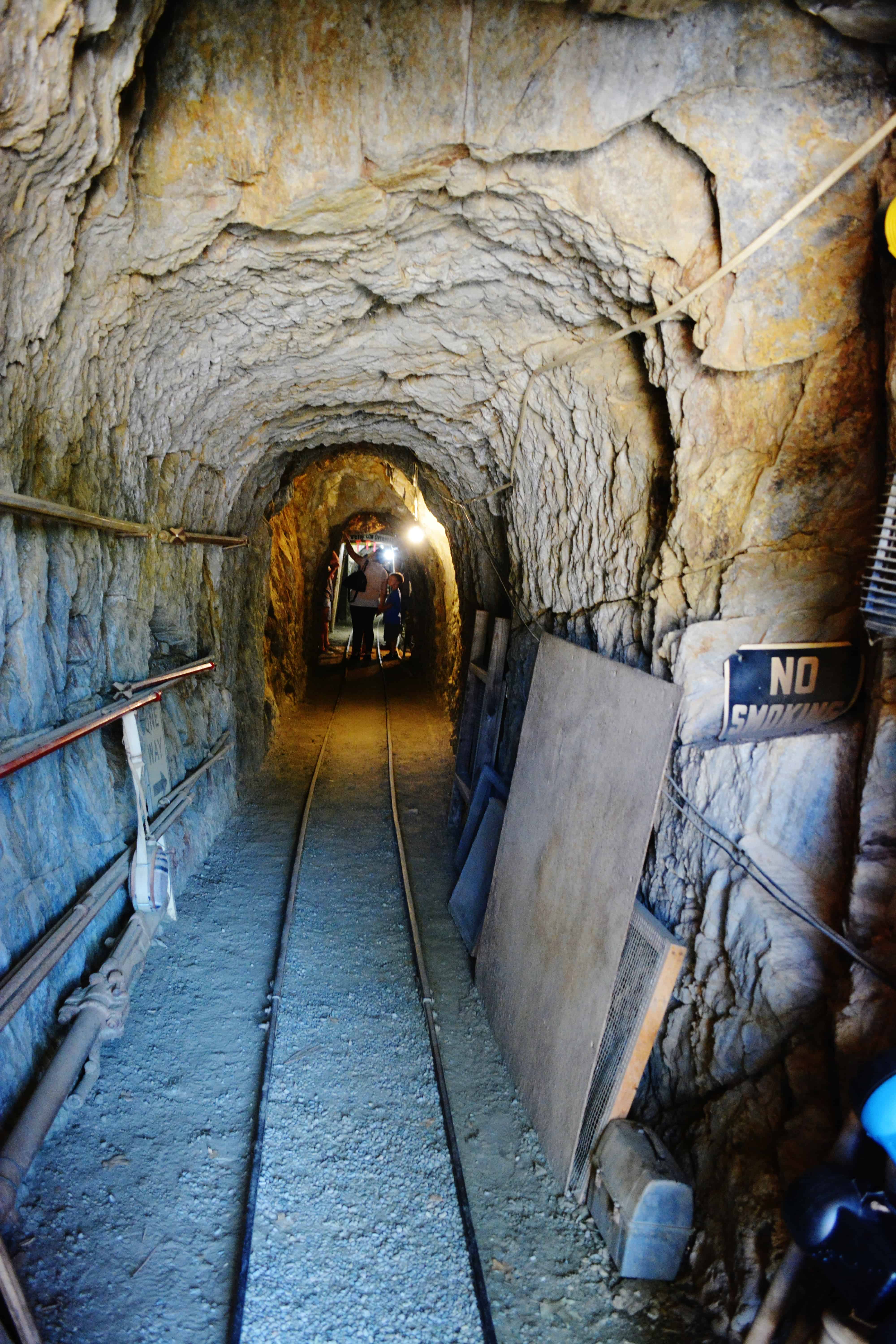
A near-constant 58 degrees, the cool, dry mines consist of eleven levels linked by vertical shafts. The lowest level extends to a surprising depth of 425 feet underground. Gold tightly locked within the host quartz-rock appeared as tiny flecks. Meandering through 1000 feet of dimly lit underground tunnels, original mining artifacts such as ore buckets, tamping equipment, dynamite boxes, picks, shovels and hand tools appear around every corner.
Even the walkway exiting the High Peak Mine was lined with a wide array of antique mining equipment. A museum on property houses even more original artifacts and historical items from Julian’s mining era.
Julian’s Apple History
While miners were struggling to wrest gold from deep within the earth, a young widower, James T. Madison, arrived in Julian from New Orleans and quickly discovered the fertile soil of Julian produced more riches than the quartz veins in its mountains ever could.
Traveling to San Bernardino in a four-horse wagon, he returned with a full load of apple trees. The high elevations, chilling temperatures and water abundance of Julian proved the perfect environment for growing luscious bountiful apples.
Madison’s success was quickly followed up by neighboring farmers. Soon the countryside was filled with orchards teeming with apples. By the 1890s, Julian was now being proclaimed the “greatest apple belt in the world”.
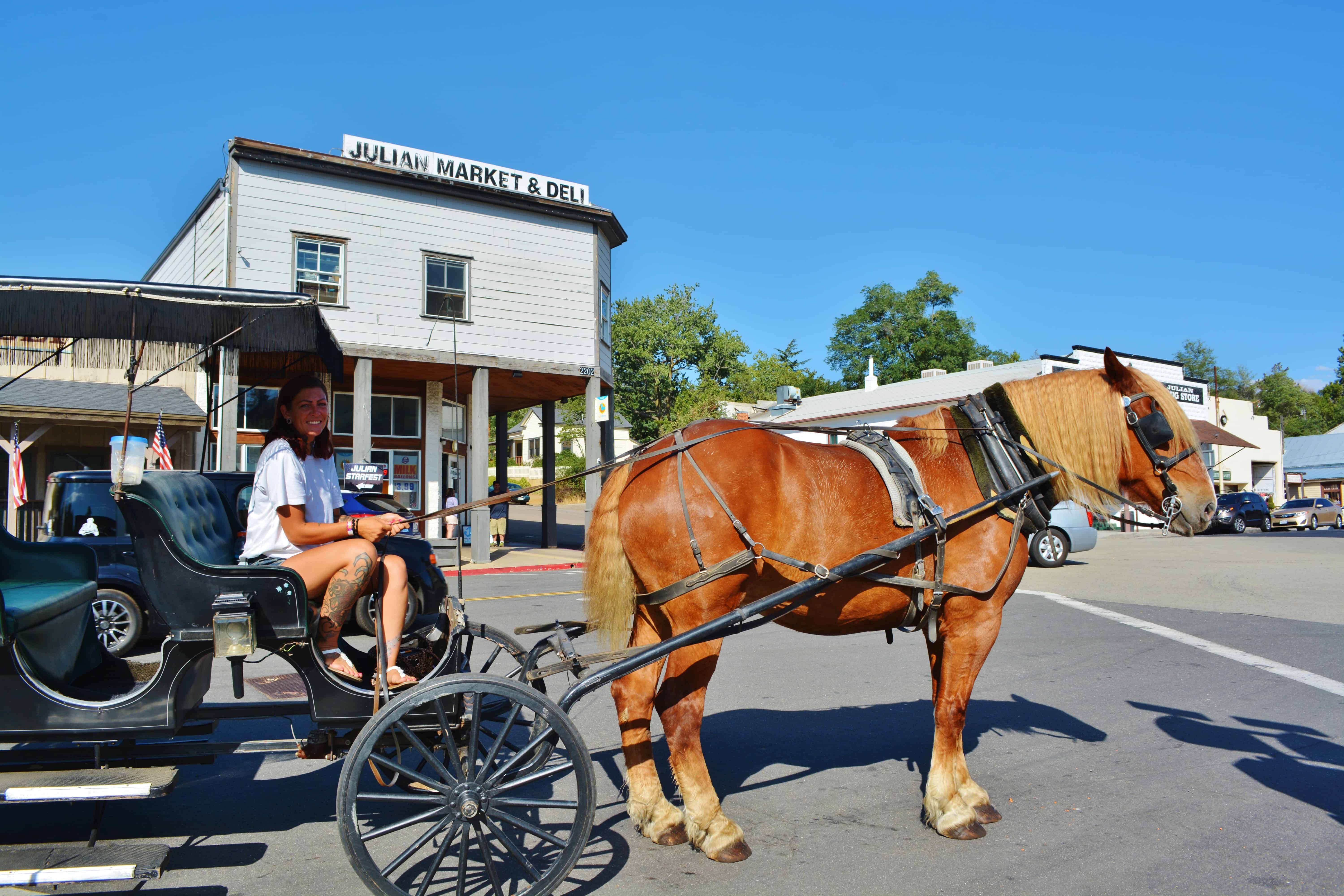
Apples shipped from the region were winning blue ribbons and first prizes at World Fairs. Julian’s apple legacy lives on today, albeit with a slight twist. For now it is the delectable and incredibly delicious apple pies that Julian is world-famous for.
The town of Julian, a dedicated historic district, feels locked in time. Radiating the aura of the Old West, this village thrives today as a fascinating blend of the past and present. Clippity-clopping our way back to yesteryear, a guide in a horse-drawn surrey took us on an informative 15-minute tour of historic downtown.
Julian Gold Rush Hotel
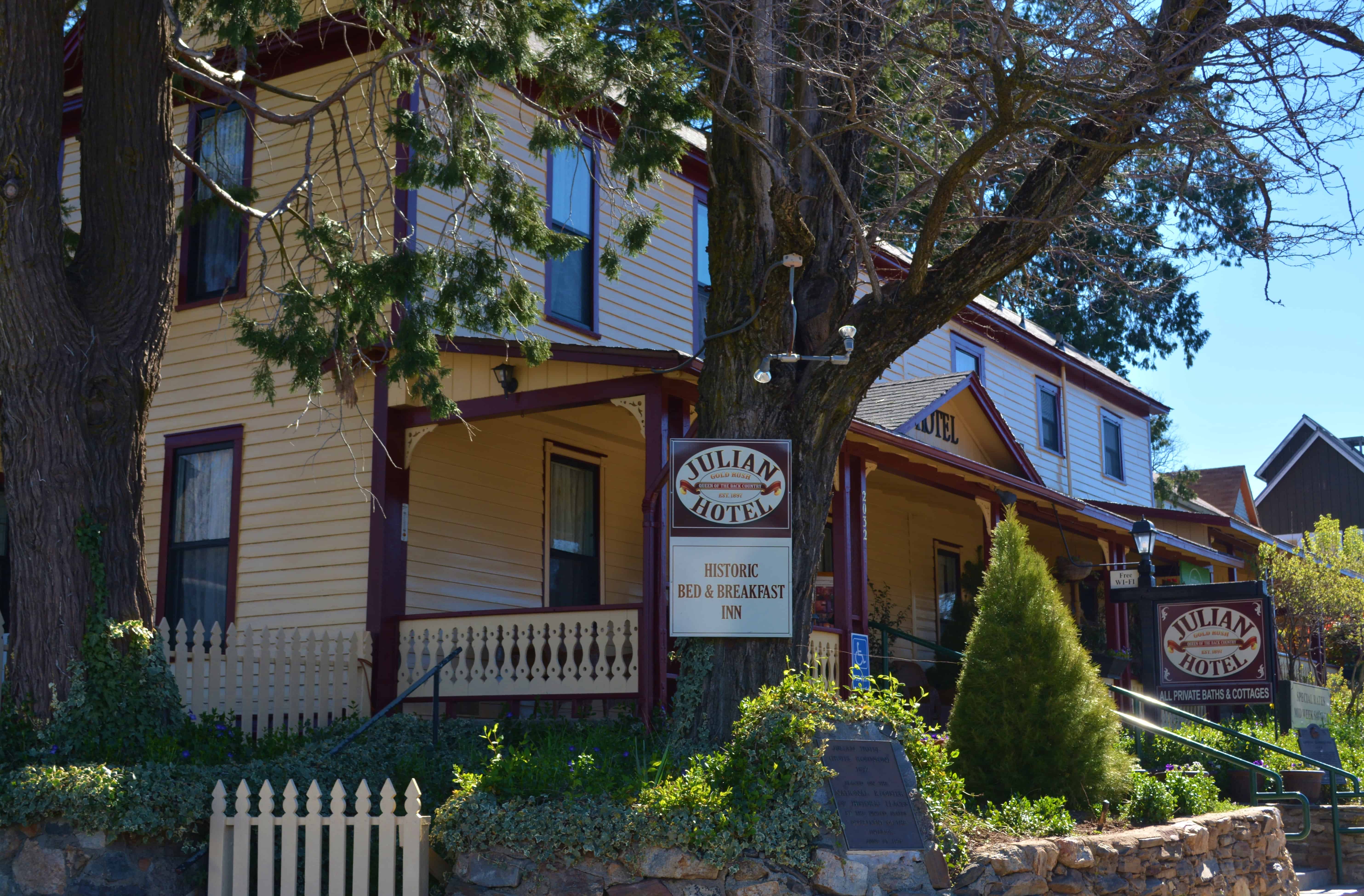
A charming Victorian bed and breakfast located in the heart of town, Julian Gold Rush Bed and Breakfast was built during the height of the gold rush era. Formerly called the Robinson Hotel, it was established in 1897 by a former freed African-American slave Albert and his wife Margaret.
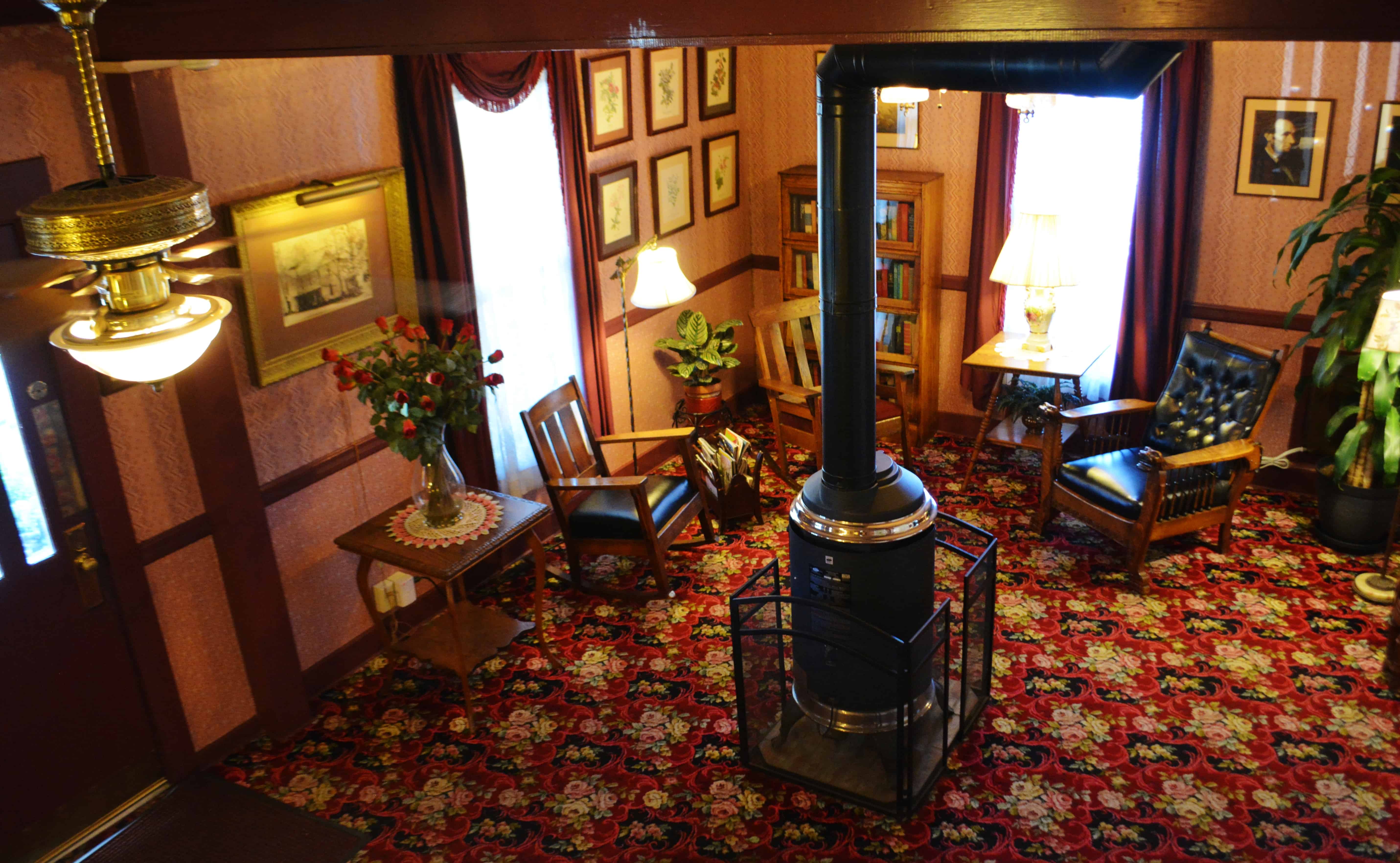
This warm and gracious guest house is the oldest continuing operating hotel in Southern California. Rooms are authentically restored to their former glory. Each displays their own fresh and distinct ambiance featuring well-appointed turn-of-the-century décor. Our second-floor room overlooked a stone patio surrounded by 100-year old cedar trees. How wonderful to fall asleep serenaded to peaceful slumber with only the sounds of chirping crickets.
The tastefully decorated front room of the hotel boasts Victorian draperies, a red-flowered carpet, rocking chairs and walls covered in period artwork and photos. A library just around the corner contains books begging to be borrowed. An antique call-bell summons the clerk who warmly greets guests. A handwritten guest book at the counter dating back to the late 1800s is an incredible surprise.
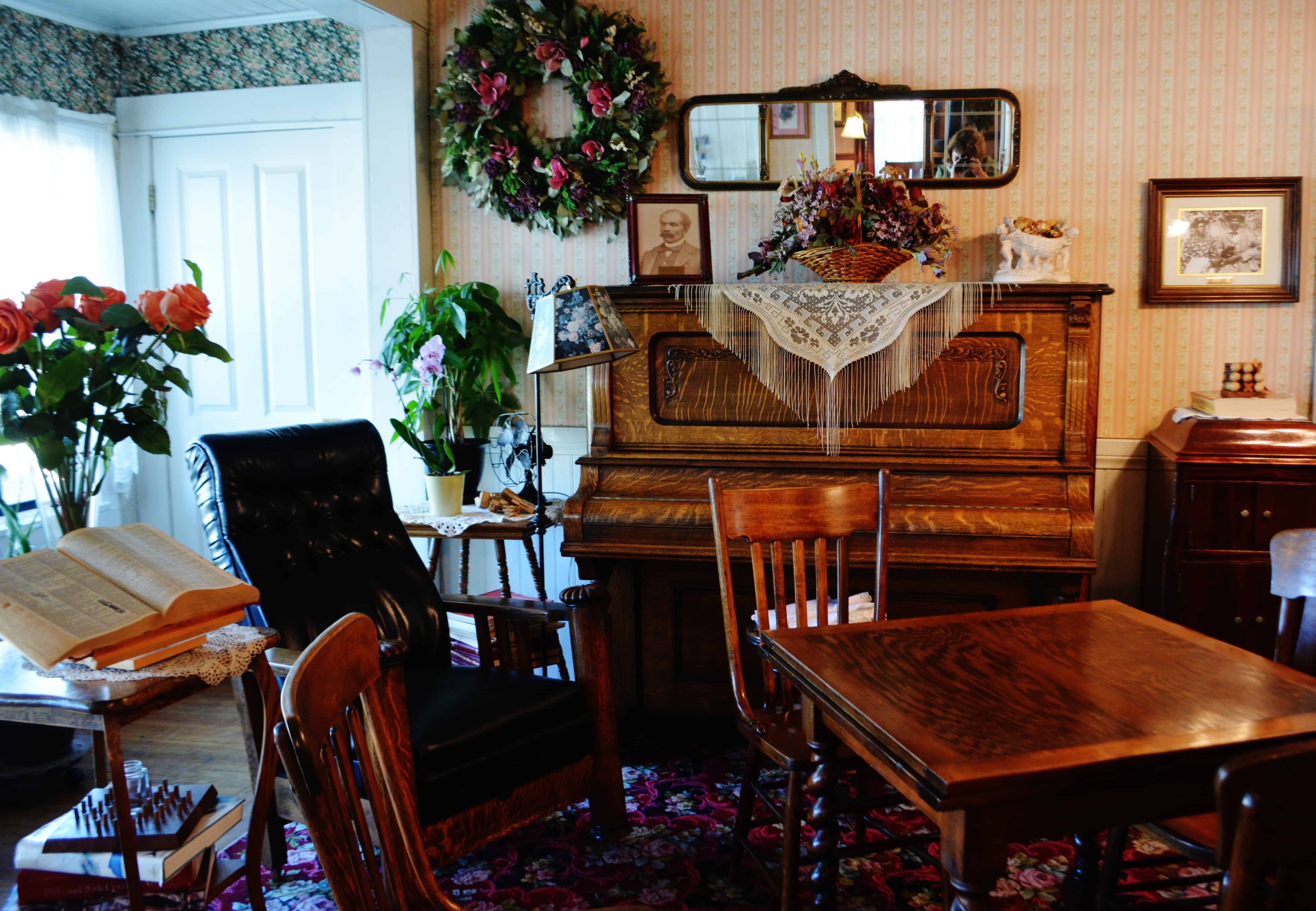
Tea is served each afternoon at five in the historic parlor on linen-covered tablecloths amid a room filled with antiques and a 1914 tiger oak Kayton piano. Guests choose from a variety of English teas, fruits, pastries and breads. And, it’s the perfect opportunity to meet and mingle with other guests in a warm, gracious atmosphere.
Breakfast served in the same dining area on lace-covered tables consisted of a combination of house-made granola, seasonal fruits and waffles topped with delightful apple compote. Imagine that famous people such as Irish novelist James Joyce and Britain’s Lord Curzon dined in this very room. And something about the inviting atmosphere makes guests arrive as strangers, but depart as friends.
Dining at Julian Café and Bakery
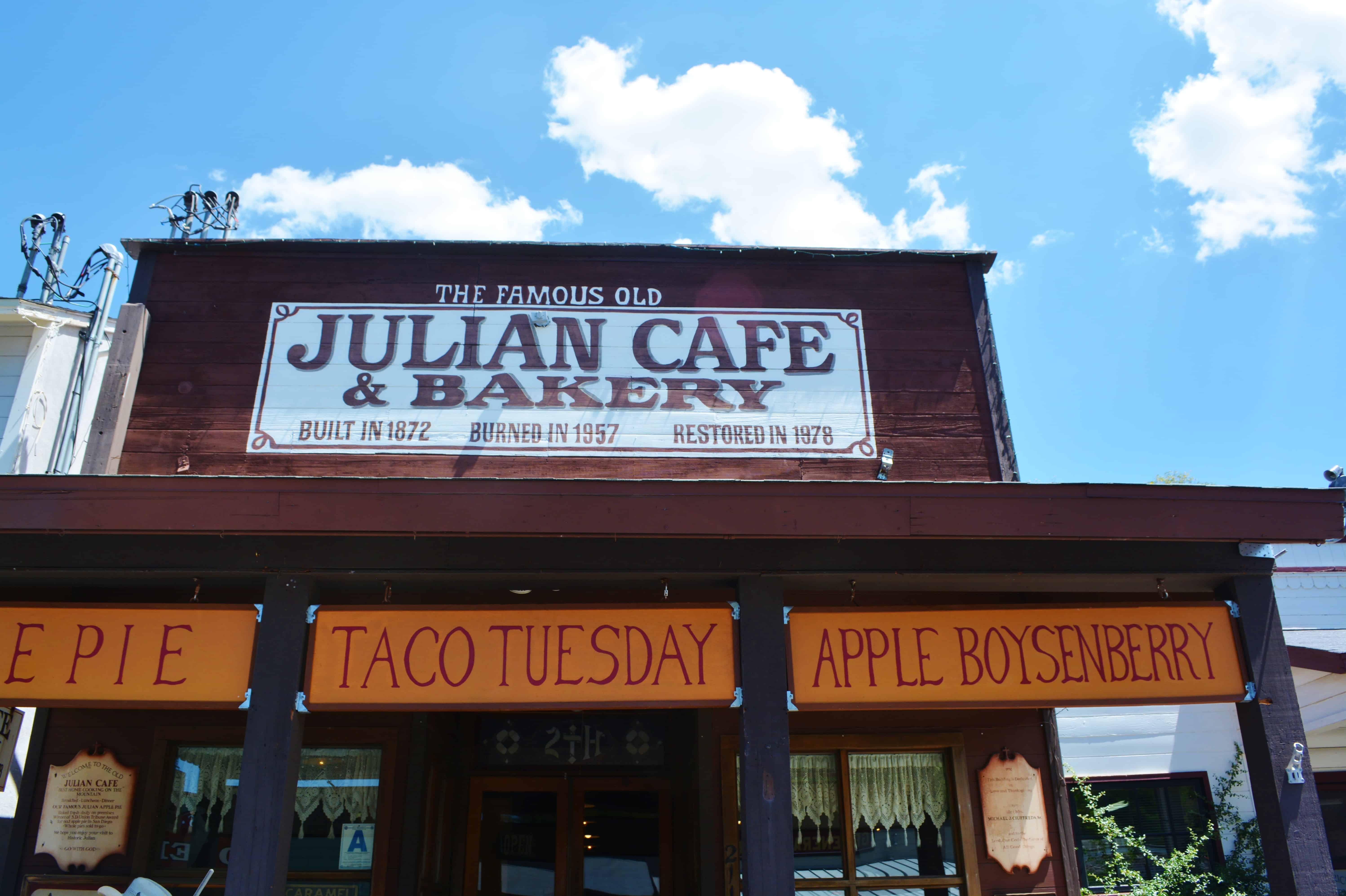
In keeping with the spirit of the Old West, Julian Café located just steps from hotel is one of the most popular eateries in town and rightfully so. Originally built in 1872 as a general store, then destroyed by fire in 1957, the structure was rebuilt in 1958. An exact replica of the original with only steps added to the front, it was restored again in 1978.
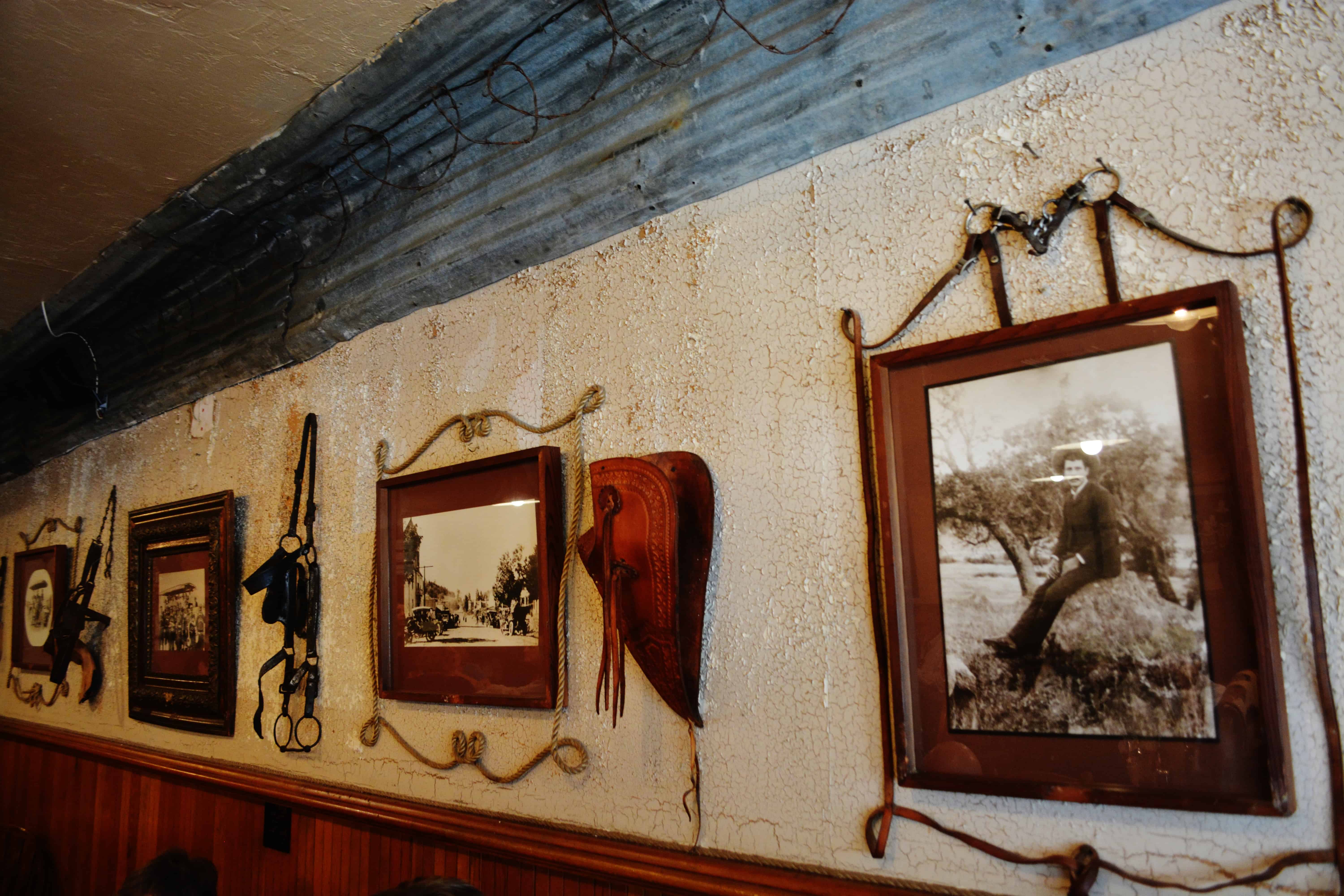
The café, now owned by Christy Connell and Cara Teter retains a vintage appearance with wall borders in corrugated tin and barbed wire and filled with cowboy and cattle-ranching relics. Period photographs dating back to the early days of Julian don its walls. Tables etched with cattle brands and placemats with inspirational messages called “Apples of Gold” set the mood. Country and western ballads serenade guests softly in the background.
Always packed to the gills regardless of the time of day, patrons patiently wait for tables while perusing the shelves of homemade jams, jellies and preserves for sale. The café features scratch-home cooking any cowboy would die for, and portions are very generous!
The Food at Julian Café and Bakery
Service is attentive and unrushed despite the Café’s immense popularity. Though the menu is extensive, I can somehow never pass on Christy’s Julian Apple Salad, crisp fresh greens with apples, candied walnuts, bleu cheese crumbles and avocado. The addition of charbroiled chicken strips was perfect for this delectable, mouthwatering overflowing- the-plate salad.
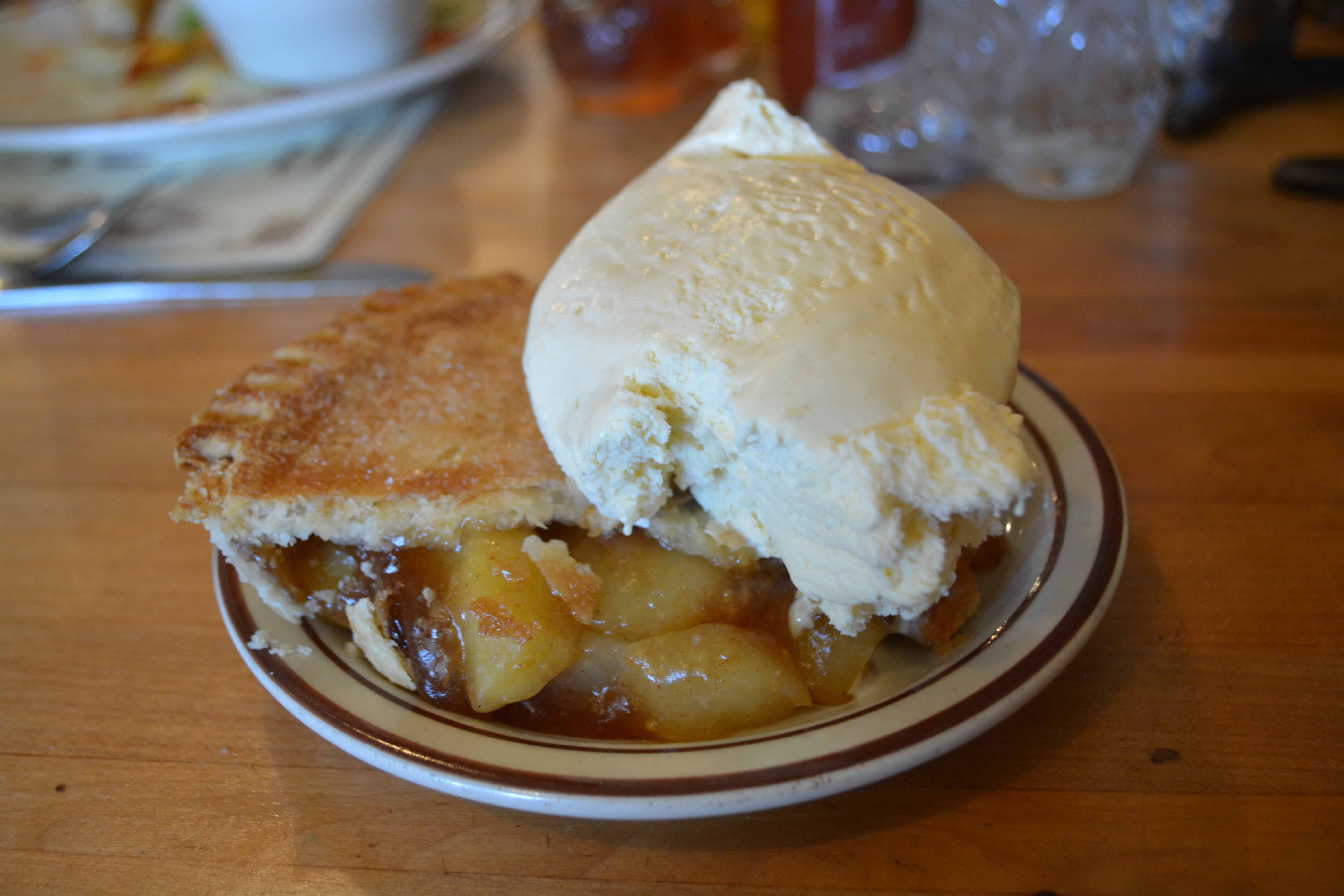
My husband, hankerin’ for a burger, went for the Mountain Mile High. This sinfully juicy half-pound Angus cheese burger bursts with flavor. Smothered in grilled onions and accompanied with fries and coleslaw, the Mountain Mile High is another Julian Café favorite. The thought that “I’ll never finish this all” is lost after one bite of the magnificent entrée.
Never to leave the Julian café without saving room for the town’s favorite dessert, apple pie, we shared a slice of this piece of epicurean heaven. Served warm, it comes with a generous dollop of French-vanilla ice cream. After all, this is the home of the famous Julian apple pie!
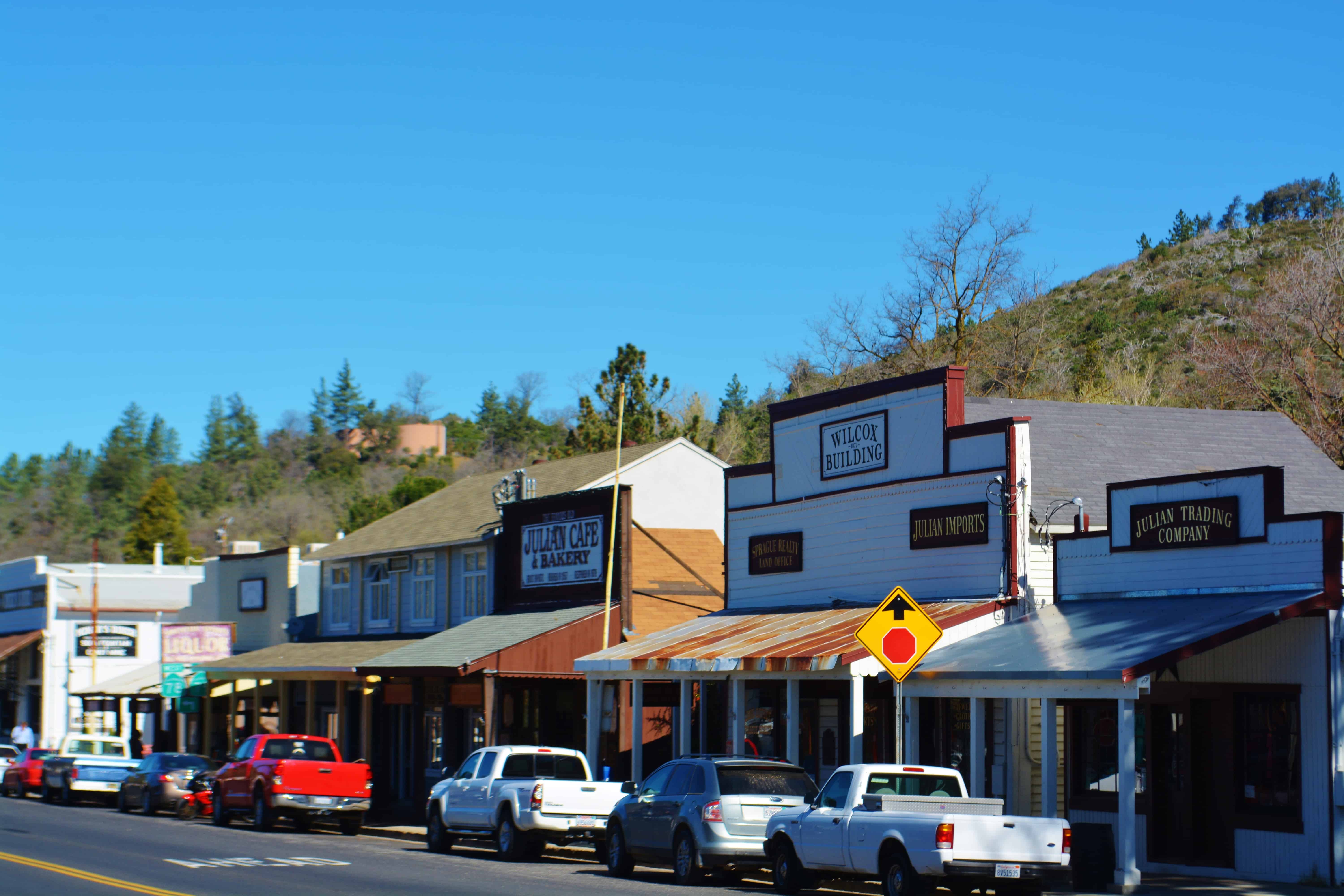
After perusing the quaint boutiques, museums, wine tasting stops and shops in town, visitors looking to do more have many choices outside the historic area. These include everything from wineries, cider mills, and missions to mountain hikes, waterfalls, nature and wildlife preserves.
Peter Westbrook said “So much of our future is preserved in the past”. It’s obvious the pioneer spirit lives on here in Julian. And visitors to one of America’s finest towns are more than welcome to share in its glorious pieces of history.



